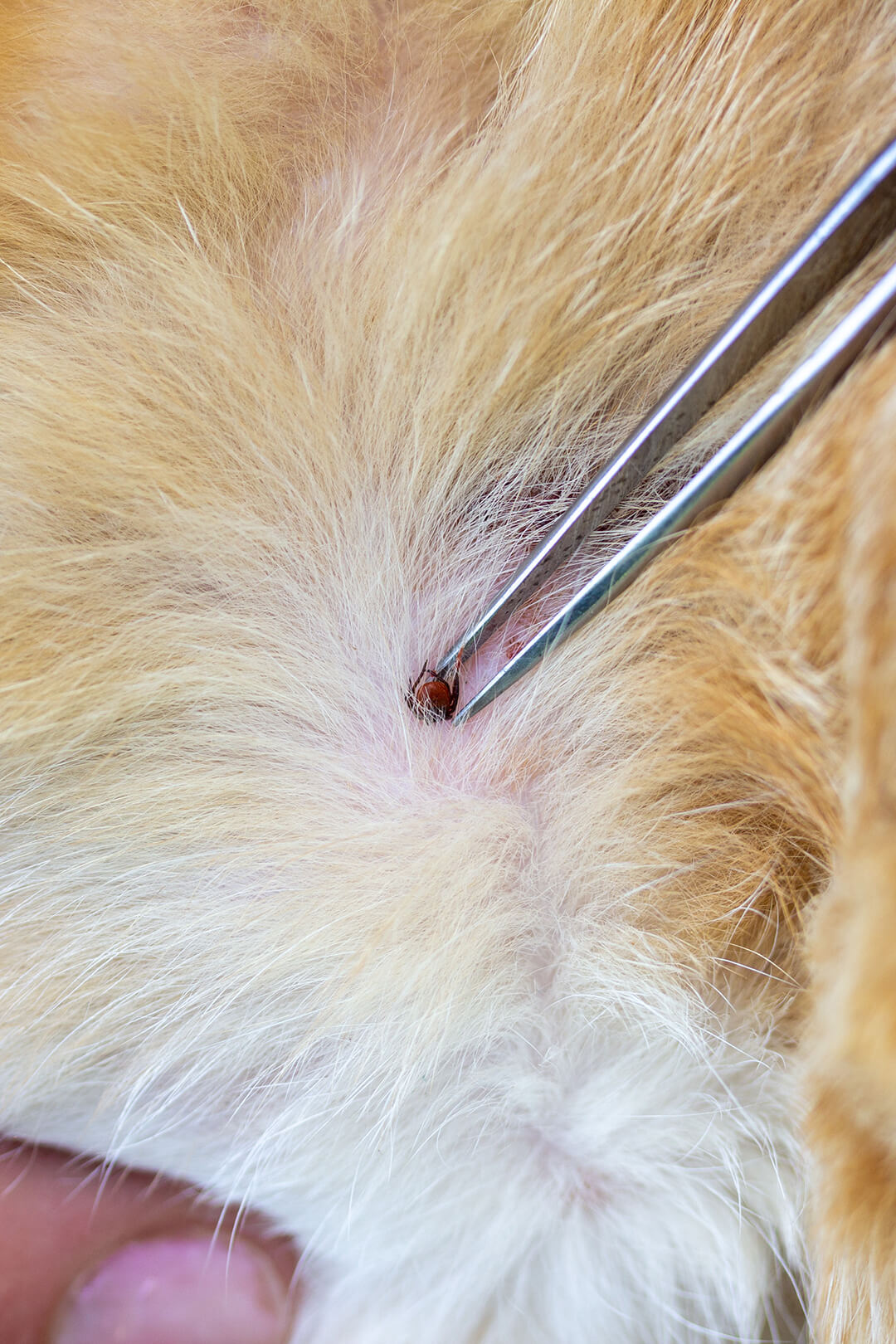You’ve heard us say it before, but we’re going to say it again: Ticks are dangerous to you and your pet.
They not only carry diseases but can pick up diseases from deer, birds, and dogs to then pass along to more deer, birds, dogs, and people! Some of the diseases they can carry include Lyme disease, Rocky Mountain Spotted Fever, Ehrlichiosis, and Anaplasmosis. There is no way to know if a tick is carrying a disease, and just one tick bite can deliver a devastating infection. To make it worse, some ticks carry multiple diseases. And many of these illnesses can be contracted by both humans and pets.
If you think your pet has been infected by a disease-carrying tick, here are common illnesses and symptoms to be mindful of.
3 Common tick-borne illnesses and symptoms:
- Lyme disease: Carried by the deer tick and Western black-legged tick. These ticks are often found in the Northeast, mid-Atlantic, North-Central states, and in California.
Dogs may not show symptoms right away and later may develop joint pain and fatigue, resulting in leg lameness and reluctance to move about. Lyme disease can also infect both people and dogs.
- Rocky Mountain Spotted Fever: Carried by the American dog tick and the lone star tick, it’s found throughout the US and Canada, but most common in the Rocky Mountains, California, and the Southeast.
Canine symptoms include arthritis-like stiffness, neurological problems, and sometimes death. This can affect both people and dogs.
- Canine Ehrlichiosis: This is transmitted by the brown tick. This disease is widespread throughout the U.S., specifically concentrated in the Southwest and Gulf Coast areas, but also north to Massachusetts and west to Oklahoma.
Symptoms include lameness, bruising of the gums and belly, loss of appetite, spontaneous nosebleeds, and runny eyes.

When it comes to fighting off ticks and the diseases they could be carrying, it is important to use the appropriate prevention.
- Know the tick species and tick risk in your area.
- Keep your dog’s favorite areas free of debris, like dead brush and leaves where ticks may hide.
- Talk to your veterinarian about Lyme disease vaccinations and about having your dog tested annually for tick-borne illnesses. This way, if your dog tests positive, he can be treated before becoming symptomatic.
- Use tick repellants, collars, or treatments. PetArmor® offers an assortment of flea & tick protection, including topical treatments, collars, shampoos, and home sprays to keep you, your pet, and your home safe from invasive ticks.

- Check for ticks by feeling for lumps. Ticks can range in size from tiny to the size of a large pea. Be sure to feel between your pet’s toes, around their tail, under their armpits, and in their ears. If you feel a lump, look to see if it’s a tick, which may range in color from black to brown to grey.
I found a tick. Now what?
First, don’t panic. Ticks on your pet are commonly found on pets. But PetArmor is here to help.
To first remove the tick from your pet, put on rubber gloves and follow these simple steps:
- Tweezers: With small tweezers, grasp the tick close to its head near the dog’s skin.
- Pull: Gently pull the tick away from the skin and try not to squish or pop it. This could spread the infection
- Dispose of the tick: Do this quickly by flushing it down the toilet
- Clean the area: Wash your dog’s skin with soap and water.
Our PetArmor® Plus Flea & Tick Topical for dogs and cats is an affordable solution to killing both fleas and ticks. Our vet-recommended formula provides your pet with a long-lasting, fast-acting formula to stop fleas and ticks in their tracks for up to 30 days.
Ticks are abundantly around us as part of nature. But with knowledge and focused attention, we can help keep our four-legged and ourselves save.



